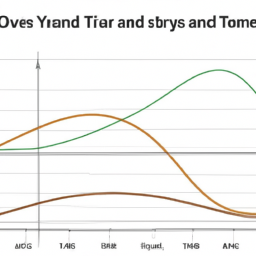Introduction
In the world of investing, the yield curve plays a crucial role in shaping investment decisions. Typically, a yield curve plots the interest rates of bonds with equal credit quality but varying maturity dates. While an upward-sloping yield curve suggests higher long-term interest rates, it may come as a surprise that some investors still prefer short-term bonds. This article delves into the reasons behind this phenomenon and sheds light on why short-term bonds remain an attractive option for certain investors.
The Role of the Yield Curve
Before delving into the reasons why investors opt for short-term bonds, it is important to understand the significance of the yield curve. A yield curve provides insights into the relationship between short- and long-term interest rates, which can be a valuable tool for portfolio management. By analyzing the yield curve, investors can make informed decisions about their investment strategies and potentially improve their portfolio performance.
Investor Preference for Short-Term Bonds
-
Liquidity: One of the primary reasons why some investors prefer short-term bonds is liquidity. Short-term bonds have shorter maturities, allowing investors to access their funds sooner if needed. This flexibility is particularly important for investors who may require quick access to cash or who prefer to have their money available for other investment opportunities.
-
Lower Interest Rate Risk: Short-term bonds are less exposed to interest rate Risk compared to long-term bonds. When interest rates rise, the value of existing bonds decreases. By investing in short-term bonds, investors can mitigate their exposure to potential interest rate fluctuations and preserve their capital.
-
Greater Flexibility: Short-term bonds offer investors the opportunity to reinvest their funds more frequently. As the bonds mature, investors can reassess their investment options and potentially take advantage of higher interest rates that may be available at that time. This flexibility allows investors to adapt their investment strategy to changing market conditions.
-
Lower Default Risk: Short-term bonds generally have lower default Risk compared to long-term bonds. The shorter maturity period reduces the likelihood of an issuer defaulting on its debt obligations. For Risk-averse investors, this lower default Risk can provide a sense of security and peace of mind.
-
Diversification: Including short-term bonds in a portfolio can enhance diversification. By investing in different asset classes with varying maturities, investors can spread their Risk and potentially reduce the impact of market volatility on their overall portfolio.
-
Yield Curve Slope: Despite an upward-sloping yield curve, short-term bonds may still offer attractive yields. Depending on the steepness of the curve, short-term bonds might provide higher yields compared to their long-term counterparts, making them an appealing option for income-focused investors.
Conclusion
While an upward-sloping yield curve typically suggests higher long-term interest rates, some investors still prefer short-term bonds for various reasons. The liquidity, lower interest rate Risk, greater flexibility, lower default Risk, diversification benefits, and potential attractive yields are among the factors that drive investors towards short-term bonds. However, it is important to note that each investor's preferences and Risk tolerance play a significant role in shaping their investment decisions.
